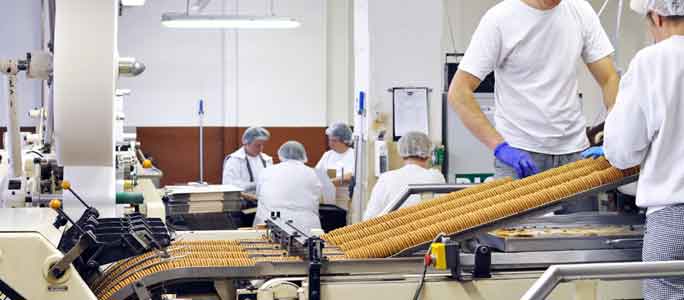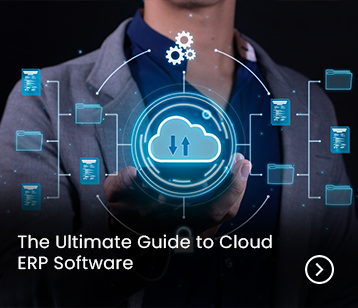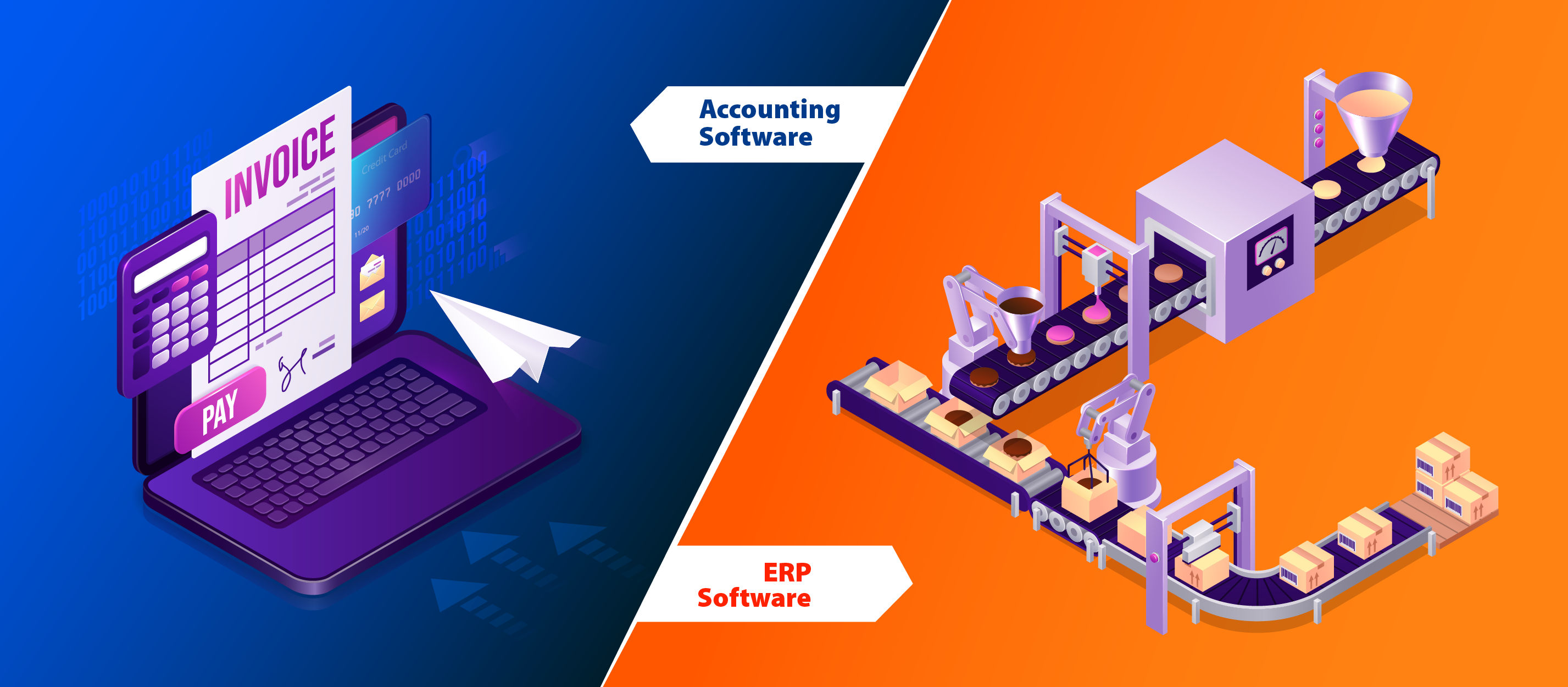
For any organization that engages in a business of selling goods, meeting the demand of their customers has always been tricky.
We say tricky, because such businesses have traditionally struggled to have an exact count of the inventory to meet the customer demand.
The sellers of perishable products have always dreaded the idea of being overstocked, for it may result in inventory wastage. While on the other hand, businesses also fear understocking, for it may result in lost opportunities for sale.
The bottom line is, businesses suffer when the sales orders go unfulfilled, and also when they are forced to carry surplus inventory when items aren’t moving.
If only the businesses could have a crystal ball to predict the accurate demand. If only it was that easy…
More challenges in store for the food manufacturers
After the rise of COVID-19, the disturbing visuals of piles of vegetables being thrown into the landfills and left to rot in the sun, millions of gallons of milk being dumped, and of farmers dumping their products surfaced around the globe.
These visuals highlighted how pandemic-induced fluctuations in demand had such a huge impact on the food and beverage manufacturing industry.
However, the food manufacturers know that it doesn’t take only a pandemic to cause such fluctuations in consumer demands.
The industry is marred by a number of unique challenges, apart from the changing consumer demands.
These include the perishability of raw materials, volatile commodity pricing, and certain external factors that contribute to the reduction in consumer demand and disruption of supply chains.
After the rise of COVID–19, the disturbing visuals of piles of vegetables being thrown into the landfills and left to rot in the sun, millions of gallons of milk being dumped, and of farmers dumping their products surfaced around the globe.
These visuals highlighted how pandemic-induced fluctuations in demand had such a huge impact on the food and beverage manufacturing industry.
However, the food manufacturers know that it doesn’t take only a pandemic to cause such fluctuations in consumer demands.
The industry is marred by a number of unique challenges, apart from the changing consumer demands.
These include the perishability of raw materials, volatile commodity pricing, and certain external factors that contribute to the reduction in consumer demand and disruption of supply chains.
Through this blog post, let’s take a look at the top five challenges the food manufacturers face to meet demand, the need for accurate demand forecasting, and how a food ERP software can help with demand forecasting and fulfilment. Read on:
Inaccurate production planning:
This is where the food manufacturers mostly falter.
When they begin with an unplanned, or inaccurately planned manufacturing production process, they are destined to fail to achieve the production target, and consequently, meet the consumer demand.
There are a lot of factors that require careful consideration before the manufacturing operations go underway.
The food manufacturers need to estimate the production capacity and priority.
They also need to get the routing correct, i.e., deciding what materials, machines, and equipment are going to be used in the process and what is going to be the sequence.
Planning this process accurately from start to finish proves to be a major challenge for the food manufacturers.
Insufficient inventory:
This is another challenge food manufacturers face as they set out to meet the customer demand. For order fulfilment, the manufacturers need to have sufficient inventory in place.
And for that, they need to have knowledge of how much inventory they need, when they need it, and where are they going to procure it from.
Not just this, the food manufacturers also need to have proper mechanisms in place to ensure the inventory they have is stored properly, and used well before it expires.
Inaccurate forecasting, and Inability to maintain the safety and quality of the raw material often leads to insufficient inventory, which in turn poses a serious challenge for the food manufacturers to meet the customer demand.
Disrupted supply chain:
Some situations and events of unpredictable nature are beyond the control of food manufacturers. Case in point is the COVID–19 pandemic.
The amount of disruption it has caused in global supply chains is unprecedented.
While it is extremely difficult to predict the ‘once-in-a-century event’ of pandemic, predicting the unexpected strike of workers in the transportation sector is not easy either.
All such events can disrupt the supply chains, and stop manufacturers from meeting their customers’ demand.
Seasonal demand:
There’s a certain time of the year when food manufacturing businesses experience repetitive or predictable demand patterns, which can re-occur over days, weeks, months or quarters and make it difficult for businesses to forecast future demand trends.
While some businesses experience stock-outs during their peak demand season, and thus lose out on sales opportunities, few others are forced to sell their products off in end-of-season sale due to excess stock levels. Identifying and managing these periodic peaks and troughs in demand is a massive challenge which the food manufacturers face.
Sudden change in demand/change in trends:
Then there are many external factors that can create a sudden demand for a particular product, or may create a negative demand for a product that’s stocked up with the manufacturer.
For ex: a social media post, or a sudden change in trend can trigger an increase, or reduction in customer demand for a particular product.
Being ready and geared up to meet this new demand of the consumers is a massive challenge for the food manufacturers.
Hence the need for accurate planning and demand forecasting
Production and material planning can address majority of the challenges mentioned above.
So can Demand Forecasting. While Planning determines what, when and how much should be produced considering the demand and supply.
Demand forecasting is predominantly a technique that analyzes historical sales data, revenue figures, website analytics, and takes into account a lot of other factors such as the customers, products, geography, channels, seasons, emerging technologies and innovations that may affect future sales, pricing and availability changes, product lifecycle, etc. to estimate future sales.
Through it, the food manufacturers can have knowledge of how many, and importantly which units need to be ordered, so that the manufacturers don’t stock up the inventory that won’t sell, and accurately plan by allocating resources for manufacturing or stocking up the right products in right quantities.
In order to implement the right planning and demand forecasting practices, it is important for the food manufacturers to have the right tools in place.
A Food ERP software can help with it, and do a lot more
A good ERP software for food manufacturing comes loaded with features that support demand forecasting.
The manufacturers can track inventory based on stock levels and sales velocity, forecast the future demand, and allocate the right resources to the right channels and warehouses.
Besides, a food ERP system does a lot more. Its Master Production Scheduling (MPS) module assists manufacturers to compute and sustain an optimum manufacturing plan based upon sales forecast, planned purchase, production orders, and machine and inventory statuses.
Also, its Material Requirement Planning (MRP) module allows them to ensure there’s always enough inventory available for customer order fulfillment.
By offering the shelf-life determination and expiration management capability, and support to methods such as FIFO, an ERP software for food manufacturing can help food manufacturers manage their inventory’s perishability efficiently.
What’s more, food manufacturing ERP software can even help manufacturers meet the seasonal demands.
In addition to accurate planning, it also offers another way to meet seasonal demands. Its material substitution functionality allows substitution of materials to fill the necessary demand of the original item requested but not available.
Moreover, it even helps saving bucks by helping order material well in advance and not in peak season.
And lastly, an ERP software for food industry lends resilience and robustness to the supply chains, thereby empowering the manufacturers to identify and maintain multiple verified suppliers who can be key providers of the desired items as well as alternatives to address seasonal fluctuations, and ending their reliance on a single source of supply.
To sum up
Having a realistic demand forecast allows the food manufacturing businesses to balance supply & demand effectively, meet seasonal and varying demands, keep the supply chain robust, resilient, and agile, and make strategic decisions. Contact us to know how we can help your food manufacturing business to sort through the challenges to meet the customer demand.



















